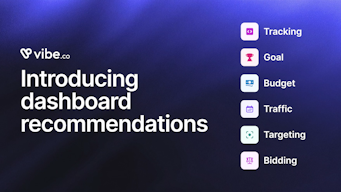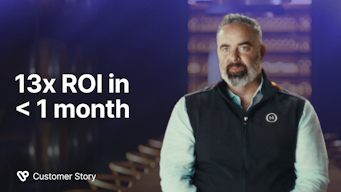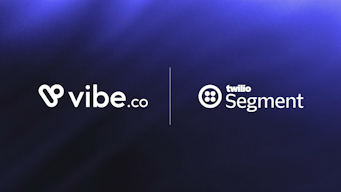Impactful CTV Targeting Strategies in a Privacy-First World
TV’s Cachet meets Digital’s Power
Over the past 4 years, Streaming TV ad inventory skyrocketed in both quality and quantity, as an international pandemic accelerated innovation in on-demand entertainment. Today, it heralds a groundbreaking convergence of traditional television's enduring strengths with the dynamic capabilities of digital advertising.
CTV seamlessly merges the best attributes of TV, including unskippable ads, premium inventory, the immersive experience of the big screen, and an established trust in well-known brands, with the agility and precision of digital advertising. This synergy empowers advertisers to captivate audiences in ways previously unimaginable, bridging the gap between the familiar comfort of television viewing and the interactive potential of digital platforms.
As CTV gains momentum, it mirrors a broader shift in consumer behavior, with subscription video-on-demand (SVOD) services experiencing a decline while advertising video-on-demand (AVOD) platforms soar in popularity. This trend underscores the growing appetite for ad-supported content and presents a ripe opportunity for advertisers to engage audiences on CTV platforms. As inventory expands daily across a spectrum of streaming services (hello Max, Disney+, Amazon, and Netflix!), brands can leverage this vast landscape to deliver targeted messages to high-value demographics, maximizing the impact of their advertising campaigns.
Make it Programmatic
Central to CTV’s strong advertising performance over the past few years, has been the advent of programmatic capabilities, which offer a compelling alternative to entrenched advertising powerhouses in Big Tech walled gardens with unreliable metrics. By embracing a programmatic approach, TV advertisers gain unprecedented control over their campaigns, leveraging real-time data insights to refine targeting, optimize performance, and ensure efficient allocation of resources. Beyond that, programmatic CTV ad buying is a bulwark against target and measurement fragmentation. Working with a programmatic platform like Vibe.co, for example, ensures advertisers have access to over 500 premium apps and channels while still comparing apples to apples results on a single platform and optimizing them on one dashboard.
How do Privacy Regulations affect CTV Ads?
In 2023, the advertising landscape grappled with a seismic shift as digital privacy regulations like the General Data Protection Regulation (GDPR), California Privacy Rights Act (CPRA), and Google's long-threatened third-party cookie deprecation reshaped the industry's approach to consumer privacy. These regulatory measures, enforced from July 2023 onwards, marked a significant turning point in the relationship between advertisers and consumer data protection. The deprecation of third-party cookies and fragmentation of digital audiences pushed advertisers to prioritize authenticated audience targeting on the open internet, positioning Connected TV (CTV) as a pivotal player in this evolving landscape, as a cookie-less, first party data focused solution (more on that later).
Because Streaming TV ad platforms primarily target audiences by household IP and attribute conversions through proprietary pixels or MMP (Mobile Measurement Partner) integrations, they have become a crucial piece of the data-driven advertising economy, offering advertisers an opportunity to experiment with innovative privacy-centric approaches.
More than ever, as streamers like Max, Disney, and Paramount expand their CTV ad space inventory and AVOD demand continues to grow, industry stakeholders recognize the urgent need to integrate robust privacy protections now to prevent potential regulatory hurdles from impeding the platform's growth trajectory in the future.
The necessity for stringent privacy laws within the advertising industry stems from a history of ad hoc technological advancements and regulatory frameworks that failed to adequately address growing privacy concerns. Decisions made in the development of digital display advertising, targeting, and programmatic buying have revealed glaring inadequacies, prompting industry stakeholders to acknowledge and rectify past missteps.
Today, CTV represents a clean slate to institute privacy best practices from its inception, advertisers have a unique opportunity to navigate the complex intersection of advertising and consumer privacy with foresight and diligence.
How to Power CTV Targeting
Advanced targeting strategies have transformed the way advertisers engage with Streaming audiences by leveraging technologies like household IP targeting to deliver personalized messages directly to consumers' living rooms. Broadly speaking, Household IP targeting allows advertisers to reach whole households and the connected devices within them (Connected TV, mobile devices, tablets) utilizing persistent IP addresses as digital identifiers akin to street addresses.
IP targeting operates without reliance on cookies, ensuring persistent and accurate audience segmentation even across devices. This strategy enables advertisers to tailor their campaigns to specific demographic, interest-based, and in-market profiles, effectively reaching households above a certain income or casual gamers, for instance, by delivering relevant ads tailored to their interests and needs.
Meanwhile, consumers are increasingly open to ad-supported content as streaming services across the board begin to recognize how much more profitable ad dollars can be than subscription fees, further underscoring the significance of data-driven advertising in the Streaming TV space.
A Targeting Paradigm Shift
The integration of data-driven ads seamlessly into TV programming tangibly enhances consumer receptivity, earning x10.3 higher viewer engagement than other digital channels, as reduced subscription prices are exchanged for relevant and engaging advertisements. This paradigm shift away from TV's classic contextual targeting towards more precise and targeted approaches underscores the industry's commitment to delivering value both to advertisers and consumers in the Streaming TV ecosystem.
In this context, marketers who continue to think of television advertising as a top of funnel, contextual play will miss out on the true potential of targeted CTV campaigns: affordable, specific, channel agnostic audience targeting. Think of it this way: advertisers used to blow their entire budgets on just a few primetime shows because there was no other way to ensure that a meaningful amount of potential customers would catch their message. Today, IP targeting allows CTV ad platforms like Vibe.co to find high-intent audiences, no matter where they are - HGTV, CNN, Crackle, or Crunchyroll - the channel doesn’t matter!
Picking the Right CTV Targeting Platform
At Vibe.co, we recommend advertisers begin with a clear campaign goal (awareness, web traffic, retargeting, app installations), create relatively broad targeting segments with little to no channel inventory restrictions, and run campaign tests to gather insights into the channels their audiences are actually spending time on. Campaigns and ad sets can then be optimized in real-time to reflect those findings.
We are especially confident making this type of audience-first strategic recommendation because of Vibe’s advanced, privacy-safe targeting protocols, which include:
- Double filtering our Household IP lists for:
- Exclusively residential addresses
- Locations with moderate ad traffic
- Scoring retargeted audiences in a way that decreases their value (and price) as the time of their most recent web visit recedes
- Using offline signals and bidstream to garner high-value impressions matching campaign KPIs and goals for the best price.
- Building and targeting lookalike audiences based off of previous campaign results
- Creating in-house ID graphs linking IPs with other identifiers
- Integrating with legacy, user-friendly reporting platforms like Google Analytics which afford advertisers immediate access to key metrics like impressions, reach, conversion rate, total ad spend, ROAS, etc.
Further, Streaming TV advertisers often benefit from working with attribution partners (who typically integrate with most major CTV ad platforms) like Incrmntl, Adjust, or MetricWorks to analyze user behaviors across various channels and assess the impact of their ads on the overall customer journey.
CTV Targeting Best Practices
Beyond working with the right ad platform and remaining channel-agnostic to gain initial audience insights, here are a few simple guidelines for impactful audience targeting.
- Define One Goal per Campaign
Advanced ad platforms like Vibe.co tailor their bidding behavior to suit different campaign goals so costs and KPIs are aligned.
For Brand Awareness, for example, our bidder will evenly split budgets across the targeted channels and dimension while decreasing frequency capping. For a Web Traffic campaign, on the other hand the bidder will focus on high frequency at a lower CPM, etc. Crucially, it will learn to optimize for one goal, so make sure to separate them by campaign!
2. Leverage the Data you Already Have
As the title of this article makes clear, stringent privacy regulations can make granular targeting a challenge, but not impossible! An especially effective strategy could be to use results from a previous retargeting campaign to then create high-intent audiences for traffic and awareness campaigns. Using spend data and future conversion results, you'll be able to identify key targeting data like which geos, channels, and/or time slots drive events and spend.
3. Measure and Optimize Results in Real-Time
A targeting strategy is only ever as good as its optimizations, and there’s no optimizing without measuring! Make sure to partner with the right measurement partners or to install at least two if not three pixels on your site header to record and attribute web visits, leads, and purchases. Refine and replicate targeting strategies accordingly.
Ready to learn more? Read our articles here or book a demo call!



